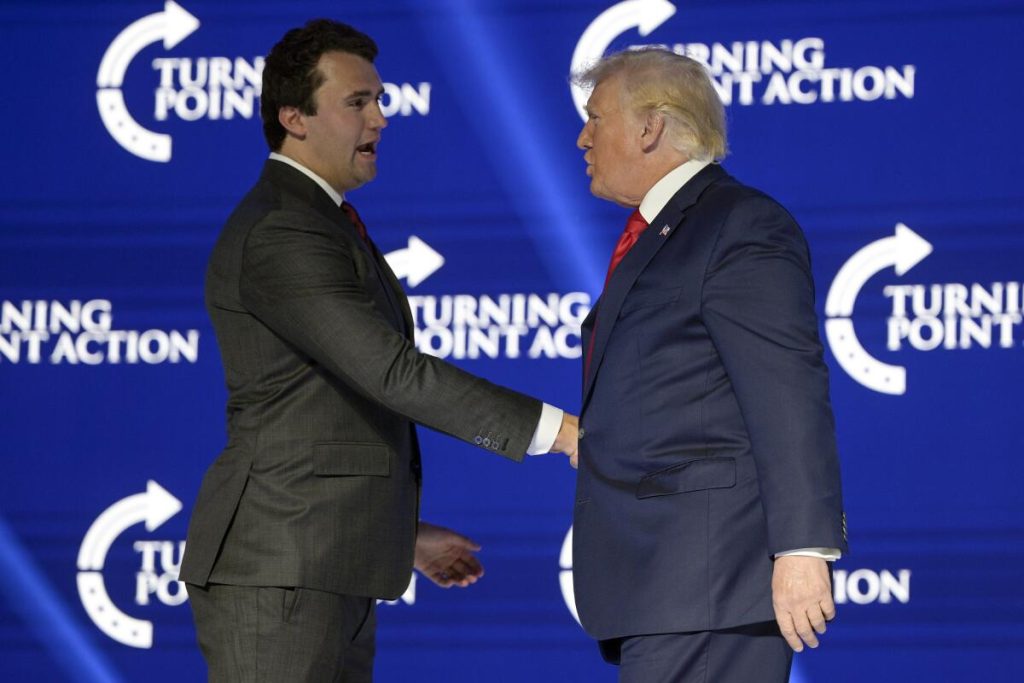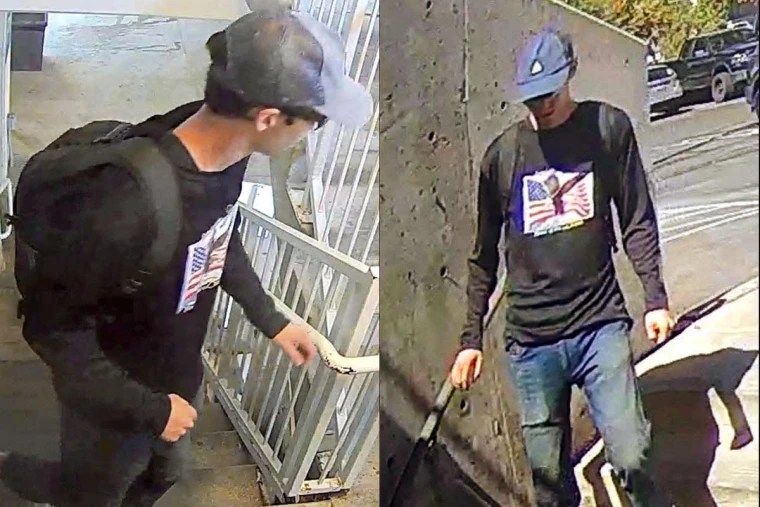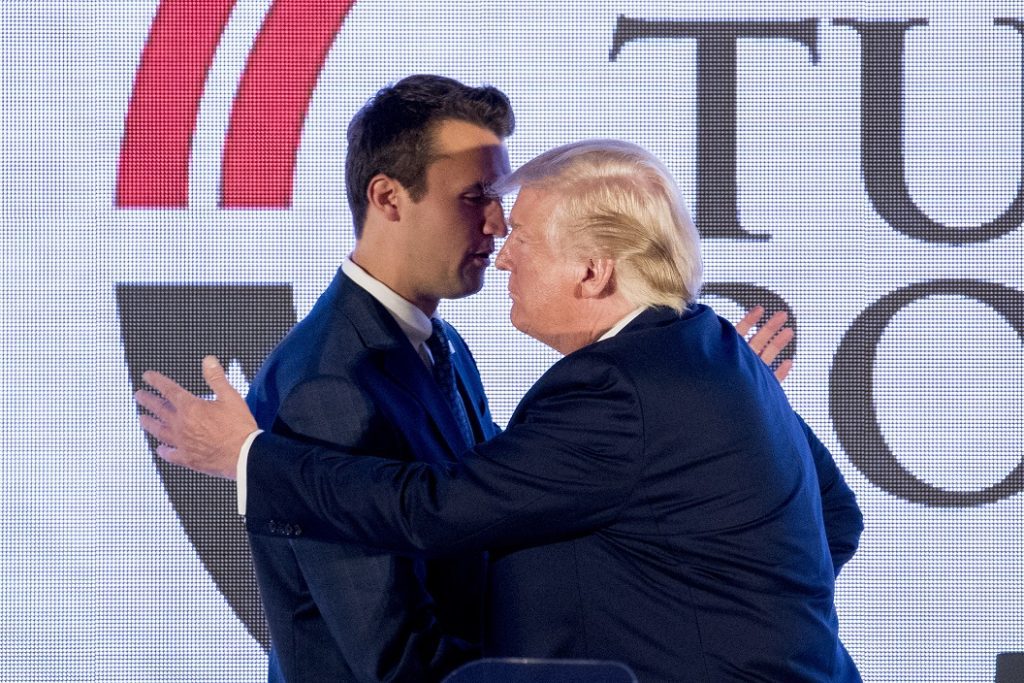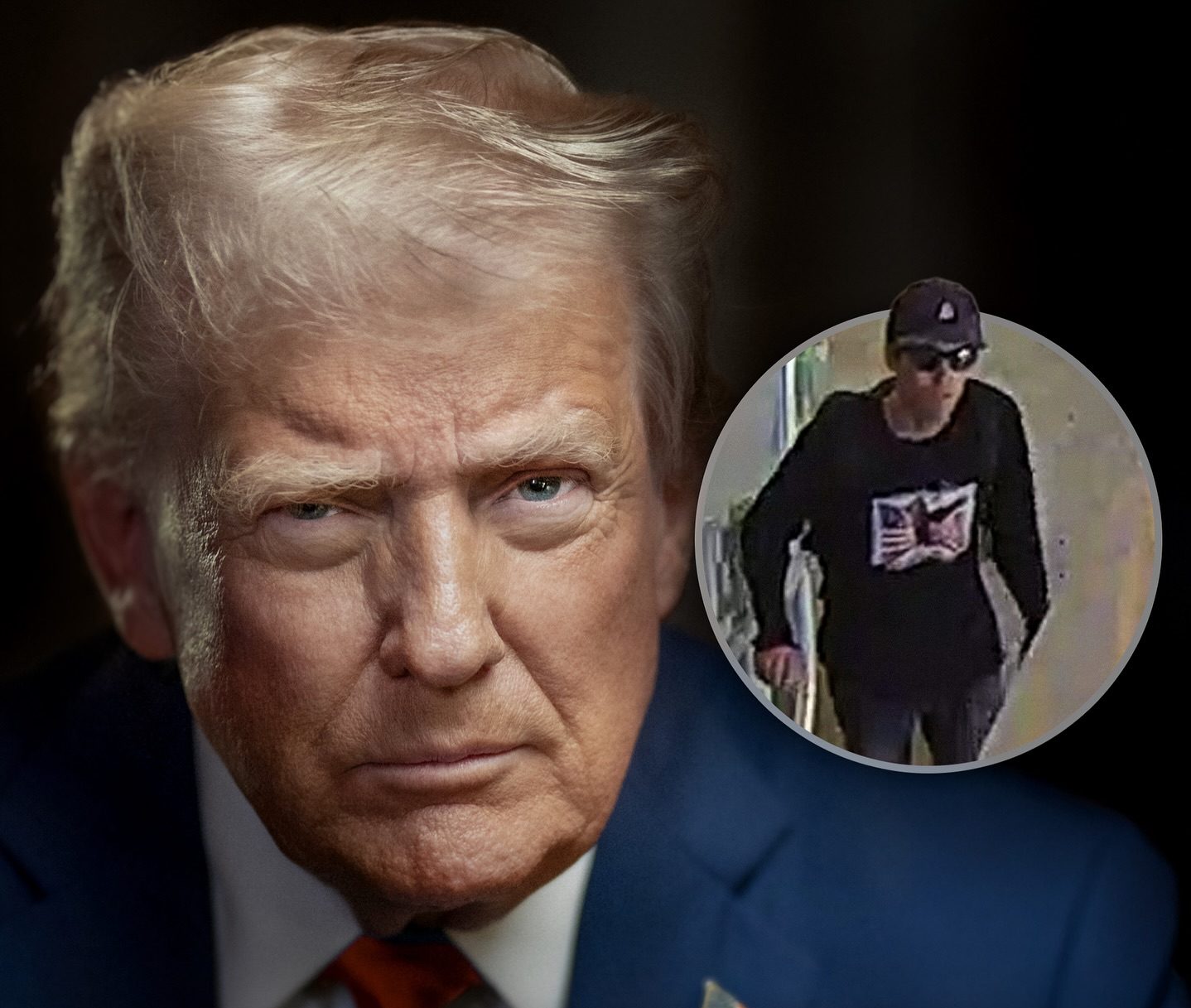Donald Trump Claims “High Degree of Certainty” Suspect in Charlie Kirk Murder Is Caught — Here’s What We Really Know
he news has shaken the country, and every hour seems to bring another layer to the story. President Donald Trump went on Fox & Friends and declared that with “a high degree of certainty,” the suspect in the murder of Charlie Kirk is in custody. For so many Americans still trying to process the loss, his words were both comforting and unsettling. Comforting because people want to believe the nightmare has reached a turning point, unsettling because law enforcement has been careful to avoid absolute declarations until all the evidence is firmly in hand.
Charlie Kirk’s death remains one of the most shocking moments of 2025. On September 10, he was at Utah Valley University in Orem, Utah, as part of his “American Comeback Tour.” The event was meant to be another stop where he would challenge young audiences, debate big ideas, and continue the work he had built his career around. Instead, it became the site of a sniper-style attack that left him fatally wounded on stage. He was rushed to a hospital, but there was nothing doctors could do. The news spread across social media and television instantly, creating a wave of grief, anger, and disbelief.

In the hours after the shooting, investigators moved quickly. They secured the scene, combed through every inch of the area, and soon after discovered a high-powered bolt-action rifle abandoned in the woods near the university. Surveillance cameras had caught an individual wearing dark clothing, a cap, and sunglasses, moving suspiciously around campus. Those images became the focus of the nationwide manhunt. Police released the photos, asking the public for help, and suddenly tips began pouring in. Thousands of calls and emails flooded the tip lines as people searched for any clue that could help track down the killer.

As days went by, the pressure grew. Vigils were held in Kirk’s memory, flowers piled up outside Turning Point USA offices, and students shared stories of how his speeches had impacted them. At the same time, online speculation ran wild, with theories about who might be responsible and why. Some suggested it was politically motivated, others wondered about personal reasons, but solid facts remained scarce. Law enforcement urged patience, emphasizing that forensic work and proper investigation take time.
Then came the break in the case that no one could have predicted. Authorities revealed that the man identified as the suspect is 22-year-old Tyler Robinson, a Utah resident. According to reports, his own father recognized him in the surveillance photos released to the public. Horrified, the father confided in a local church minister, and together they helped convince Robinson to turn himself in. That detail alone shook people—imagine being the parent who sees their child’s face on national television, accused of something so horrific. It paints a haunting picture of how close to home violence can hit, and how even families are forced into unimaginable choices when tragedy strikes.
When President Trump announced that Robinson was in custody, he spoke with his trademark confidence. To his supporters, it was reassurance that the system was working, that law enforcement had moved swiftly, and that justice was on the way. For critics, it raised eyebrows—was he moving too fast, declaring certainty before officials had finalized their statements? Trump’s influence means that millions take his words as truth, and that’s a powerful thing when investigations are still ongoing.

Meanwhile, prosecutors have already begun building the case. Recommended charges against Robinson include aggravated murder, obstruction of justice, and unlawful discharge of a firearm. If convicted, he faces the most severe consequences the law can hand down. Yet at this point, the trial has not started, and the process of gathering forensic evidence, digital communications, and eyewitness testimony is still underway. Forensic teams are reviewing prints, ballistics, and trajectory analyses to leave no doubt in the courtroom.
Even with a suspect in custody, questions hang in the air. Why did Robinson do it? Was this premeditated, or a sudden act of rage? Did ideology play a role, or was it something personal? Investigators will likely uncover more as they dig into his background, his online presence, and his communications. For now, the public can only speculate, and speculation does little to bring peace to those grieving.
The killing of Charlie Kirk has also sparked a broader conversation about safety in public spaces. How was a sniper able to position himself so close to a university event? Were there warnings missed? Could this have been prevented with different security measures? Those are painful questions, but they are necessary ones. Events that bring together large audiences—especially when the speaker is a controversial or polarizing figure—are always potential targets, and this tragedy has made that danger real in a way that feels impossible to ignore.
The emotional toll of Kirk’s death is still heavy. His supporters see him as a man who was silenced for his beliefs, someone who gave a voice to young conservatives and never backed down from debate. His critics, while often strongly opposed to his views, have also expressed sadness, because political disagreement should never descend into violence. At the end of the day, Charlie Kirk was a person with family, friends, and dreams, and his life was ended in a moment of brutality. That reality has touched people far beyond politics.

President Trump’s role in shaping the narrative is significant. His words always carry weight, and by going on television to declare that the suspect is in custody, he placed himself at the center of the story once again. For those who trust him, it’s a comfort. For those who don’t, it’s a reminder of how political even moments of national tragedy can become. But regardless of one’s stance on Trump, his statement gave the sense that the manhunt was no longer a desperate search but was moving into the next stage: prosecution and justice.
As the legal process unfolds, the story is far from over. Robinson will have his day in court. Prosecutors will lay out evidence, defense attorneys will respond, and a jury will eventually decide his fate. Along the way, new details will emerge—about motive, planning, and how he was able to carry out such an attack. The trial will no doubt be one of the most closely followed in recent years, a test of both the justice system and the country’s ability to confront political violence without descending further into division.

Personally, watching this unfold has been heartbreaking. It is hard not to feel angry that someone’s life was ended this way. It is hard not to feel scared about what it means for the future of political discourse in America. But there is also a sliver of hope in seeing that the suspect did not escape forever, that the system moved quickly, and that accountability might come. None of this brings Charlie back. His family will still wake up each day without him. His voice will still be missing from debates and stages. But perhaps, through justice, there can be some measure of closure.
For now, the nation watches and waits. Donald Trump has made his statement. The suspect is behind bars. The legal process will do its work. And all the while, the country continues to wrestle with the loss of a man who was as controversial as he was influential, someone whose life and death have left a mark on American history that won’t be forgotten anytime soon.

